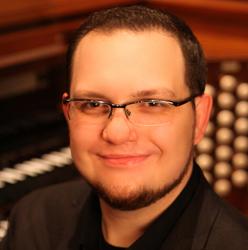
Daryl Robinson, the First Prize and Audience Prize Winner of the 2012 American Guild of Organists National Young Artists Competition in Organ Performance, is featured on a new recording, Sempre Organo (Pro Organo 7261), recorded on the Fisk-Rosales organ at the Shepherd School of Music, Rice University, Houston, Texas.
The program includes the world premiere of Come, Pure Hearts: Introduction, Theme, and Variations, a new work for organ by David Ashley White, commissioned by the artist for this project, in addition to works by Cochereau, Karg-Elert, Heiller, Franck, Dandrieu, Bach, and Liszt.
For information: www.proorgano.com.

